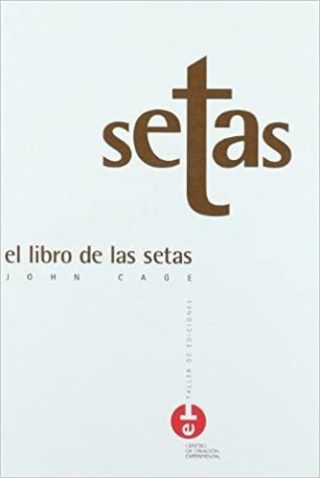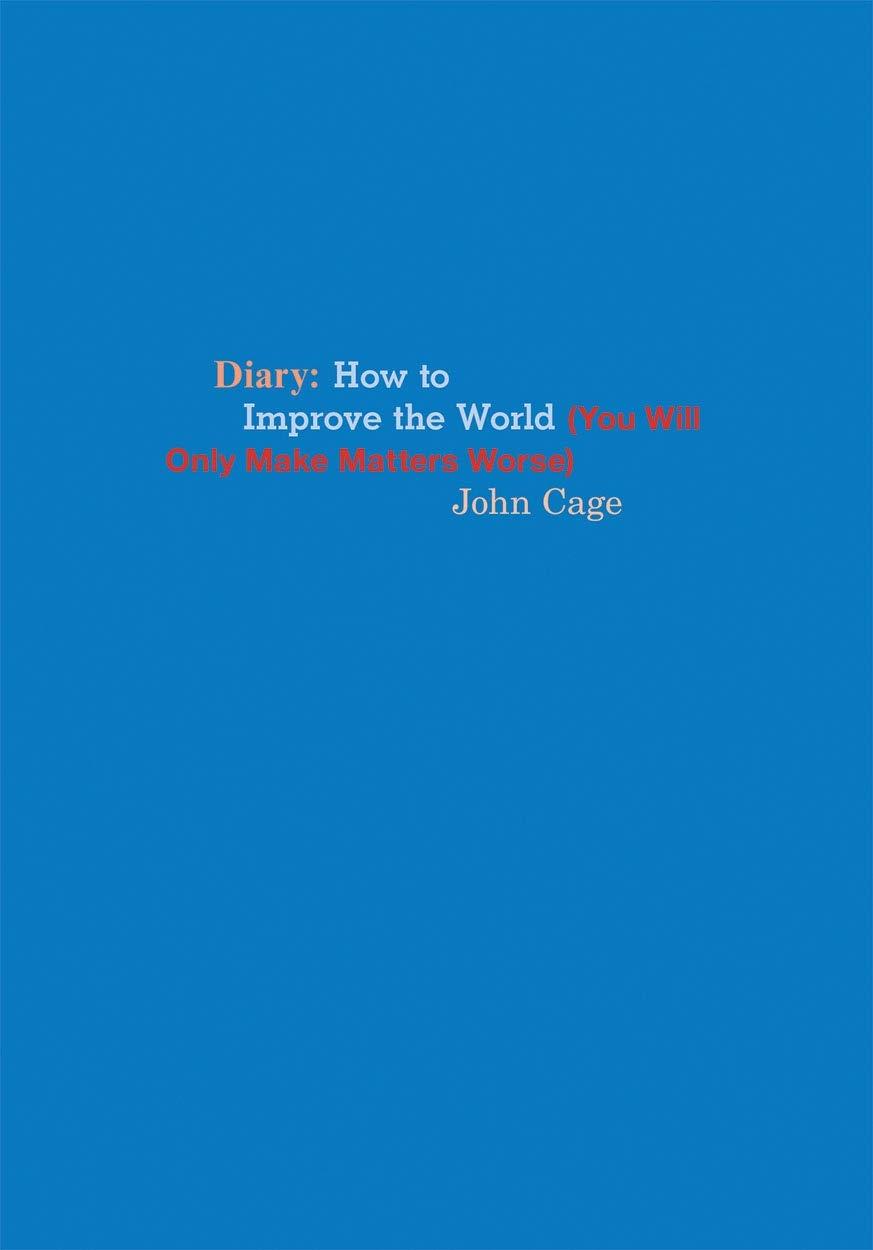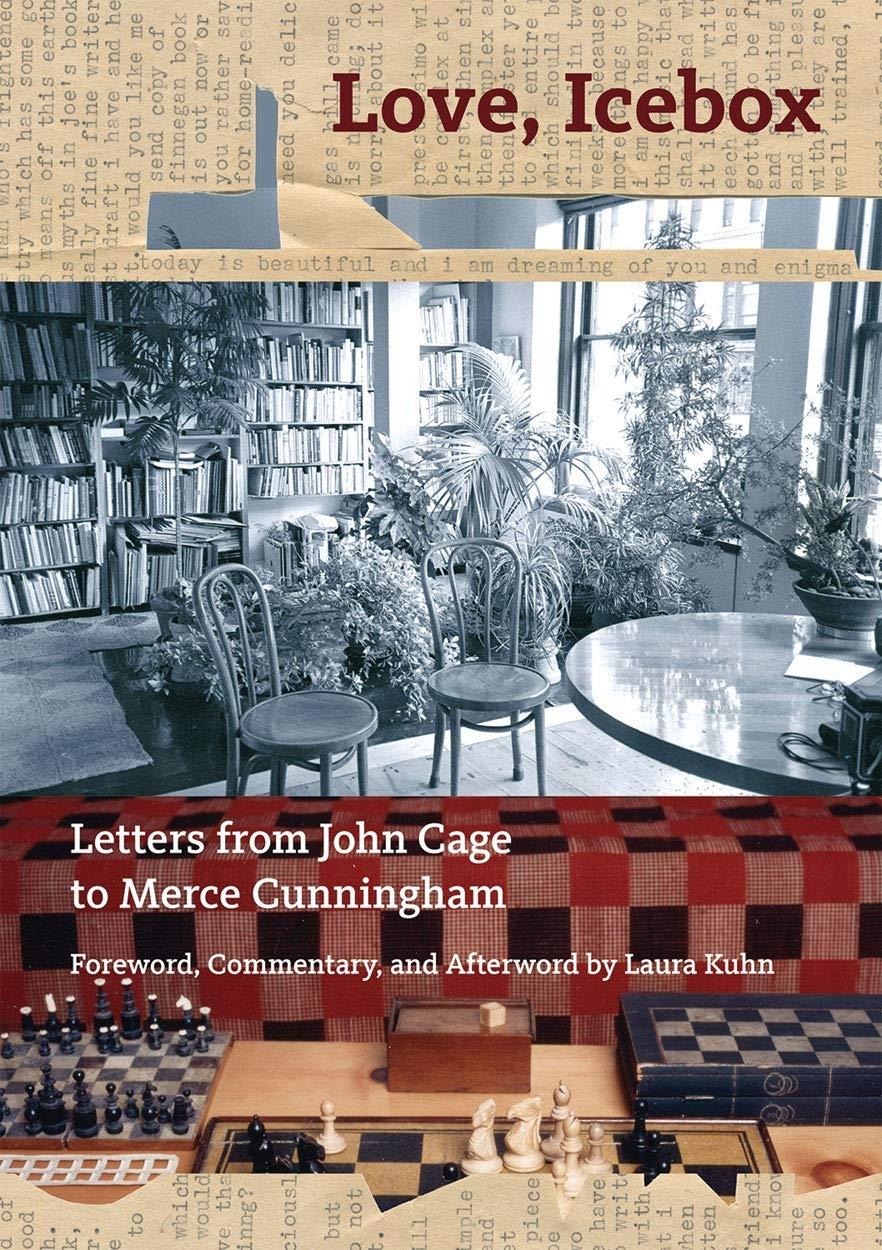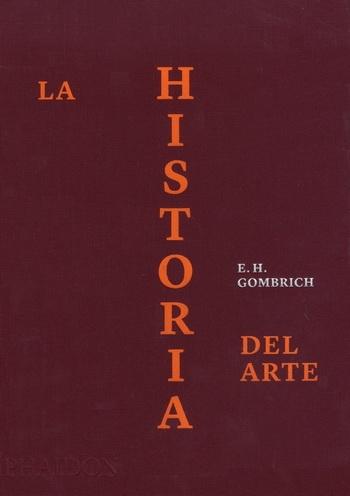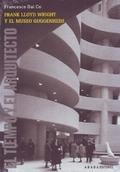Diary: How to improve the world “(You will only make matters worse)”
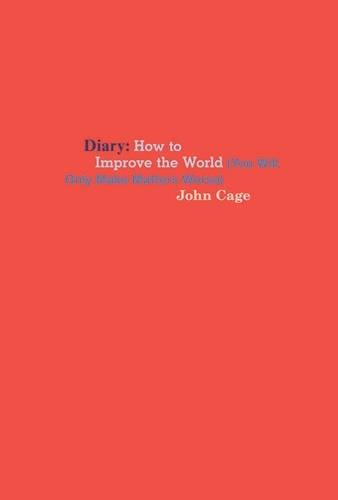
Composed over the course of sixteen years, John Cages Diary: How to Improve the World (You Will Only Make Matters Worse) is one of his most prescient and personal works. A repository of observations, anecdotes, proclivities, obsessions, jokes and koan-like stories, Diary registers Cages assessment of the times in which he lived as well as his often uncanny portents about the world we live in now. With a great sense of play as well as purpose, Cage traverses vast territory, from the domestic minutiae of everyday life to ideas about how to feed the world.
Originally typed on an IBM Selectric, Cage used chance operations to determine not only the word count and the application of various typefaces but also the number of letters per line, the patterns of indentation, andin the case of Part Three published as a Great Bear Pamphlet by Something Else Presscolor. The unusual visual variances on the page become almost musical as language takes on a physical and aural presence.
While Cage used chance operations to expand the possibilities of creating and shaping his work beyond the limitations of individual taste and perspective, Diary nonetheless accumulates into a complex reflection of Cages own particular sensibilities as a thinker and citizen of the world, illuminating his social and political awareness, as well as his idealism and sense of humor: it becomes an oblique but indelible portrait of one the most influential figures of the 20th century American avant-garde.
This beautiful hardcover edition from Siglio collects all eight parts for the first time. Co-editors Joe Biel and Richard Kraft used chance operations to render the entire text in various combinations of the red and blue (used in the Great Bear pamphlet publication of Part Three) as well as to apply a single set of eighteen fonts to the entire work. In the editors note, Kraft and Biel succinctly elucidate the procedure of chance operations and demonstrate its application, giving readers a rare opportunity to see how the text is transformed.
Out of stock
Out of stock


